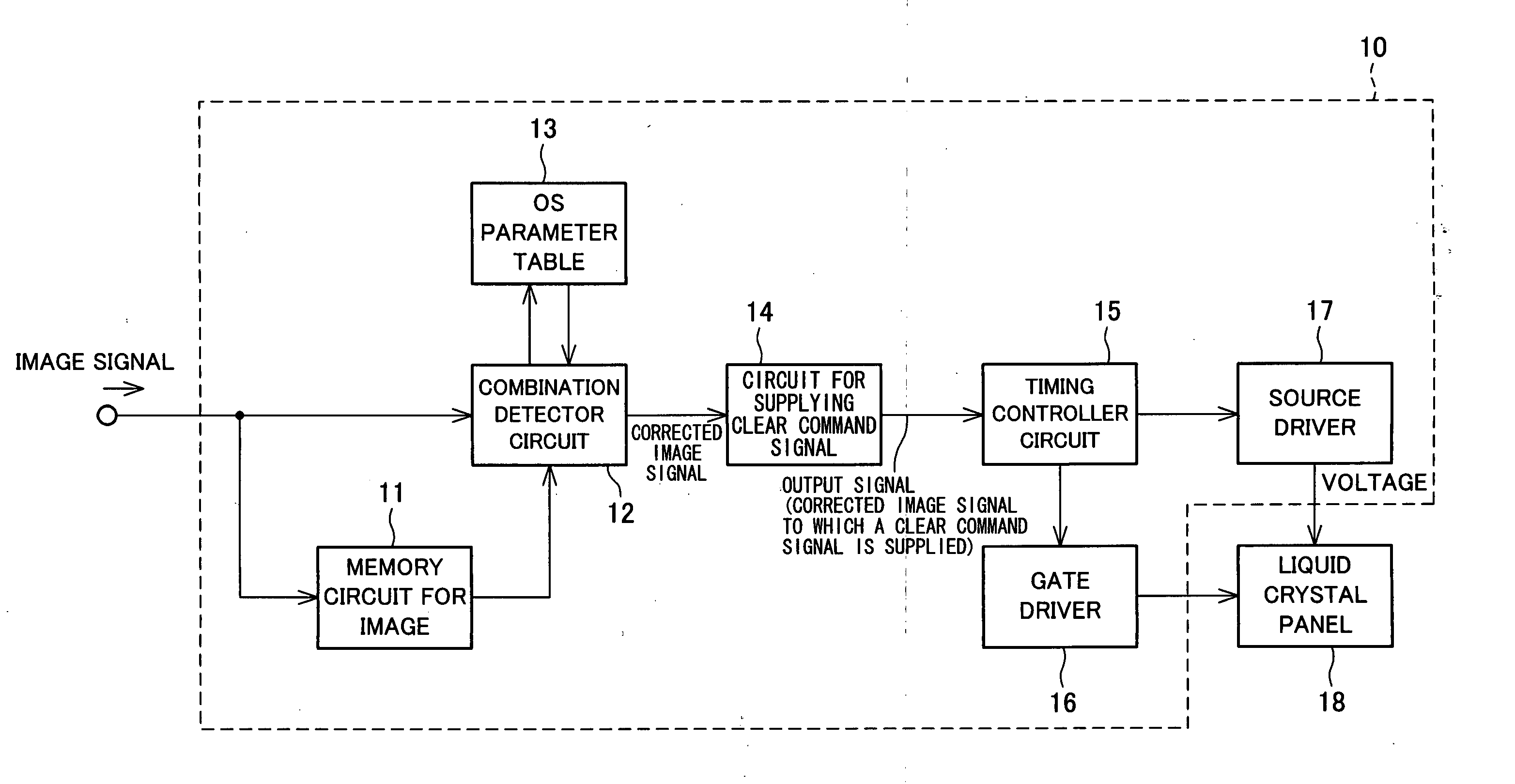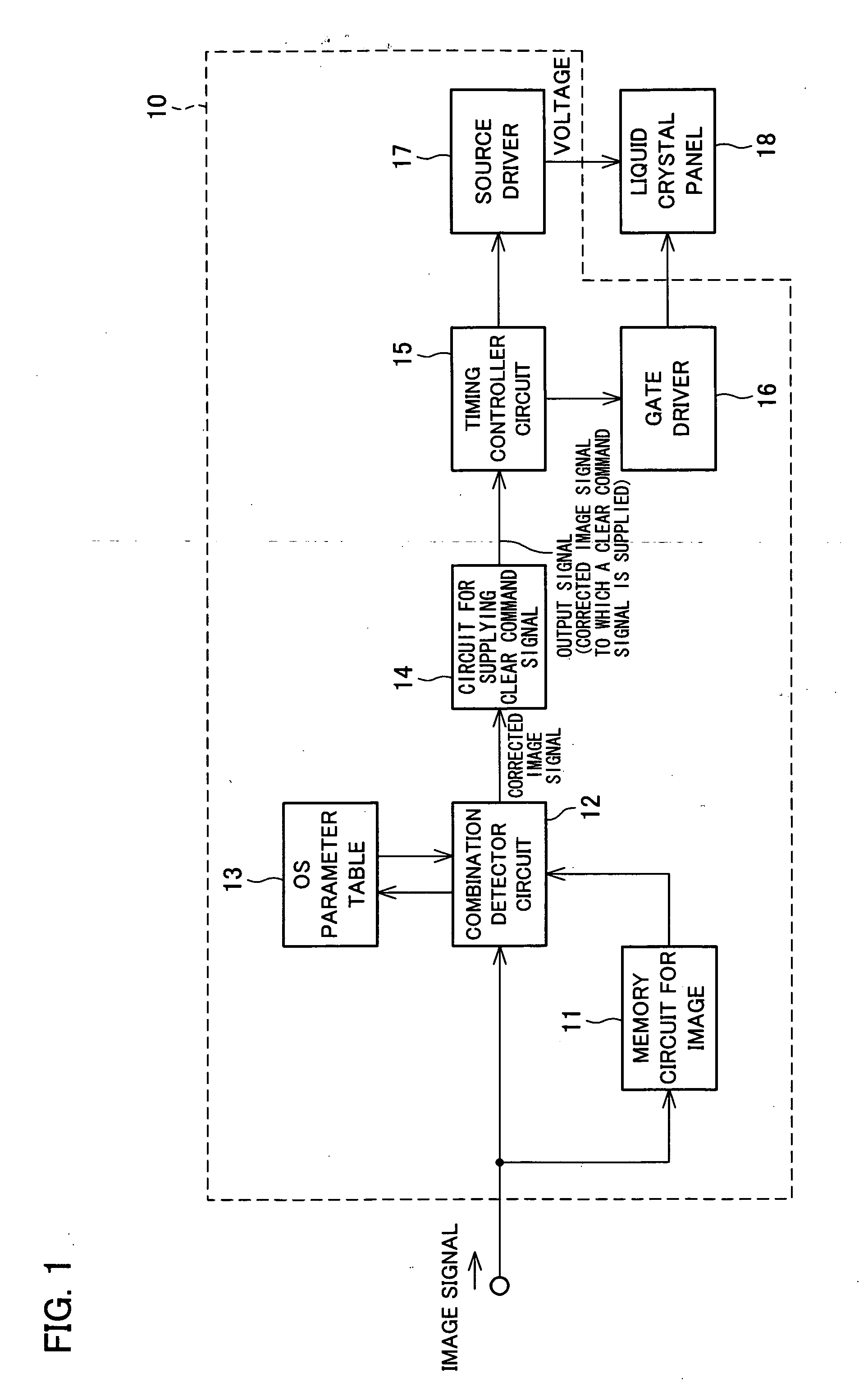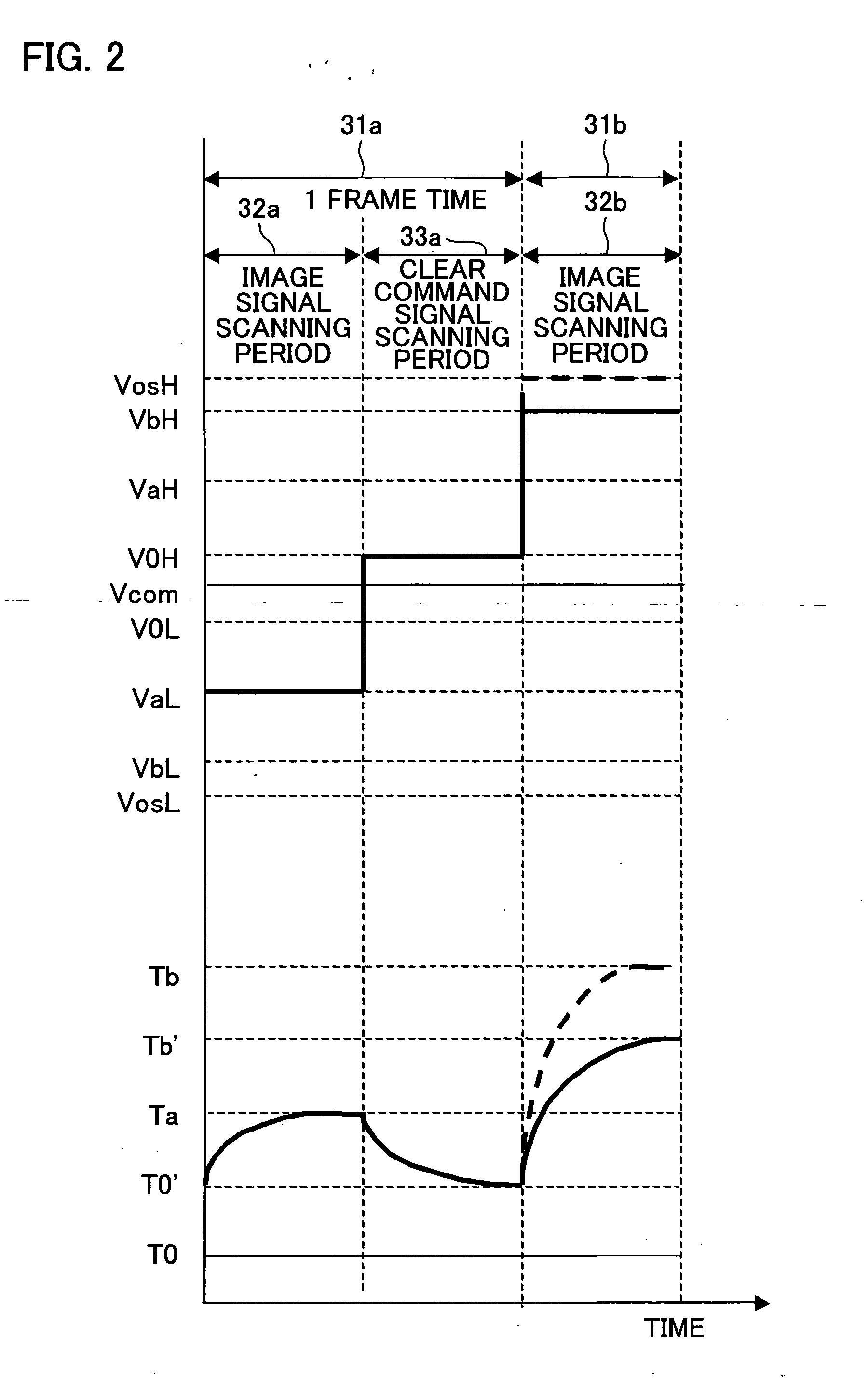Liquid crystal display device and method for driving liquid crystal display device
a display device and liquid crystal technology, applied in the field of liquid crystal display devices, can solve the problems of deterioration of images, blur in moving objects, slow response time of holding display devices, etc., and achieve the effect of high image quality
- Summary
- Abstract
- Description
- Claims
- Application Information
AI Technical Summary
Benefits of technology
Problems solved by technology
Method used
Image
Examples
embodiment 1
[0041] A first exemplary embodiment (exemplary embodiment 1) of the present invention is explained as follows, referring to drawings. In the exemplary embodiment, it is put that a video signal is a 60 Hz progressive signal.
[0042]FIG. 1 is a schematic diagram of an arrangement of a liquid crystal display device according to the exemplary embodiment of the present invention. In FIG. 1, sections unnecessary for explanation are omitted from the diagram.
[0043] The liquid crystal display device embodying the present invention includes a driving circuit 10 and a liquid crystal panel 18.
[0044] The driving circuit 10 includes a memory circuit 11 for storing an image therein, a combination detector circuit 12, an overshoot parameter table (an OS parameter table) 13, a circuit 14 for supplying a clear command signal, a timing controller circuit 15, a gate driver 16, and a source driver 17. The driving circuit 10 generates an image signal of an image to be displayed and provides the image si...
embodiment 2
[0076] A second exemplary embodiment (exemplary embodiment 2) of the present invention has the same arrangement as the exemplary embodiment 1 except the method of setting an OS parameter table which is looked up by a combination detector circuit 12. How to set the OS parameter table in this exemplary embodiment explained as follows.
[0077] As explained above, in one display, voltage Vos (illustrated in FIG. 2), which is given to a pixel, is determined depending on peak transmittance Ta at a steady state and peak transmittance Tb at a steady state. In this exemplary embodiment, voltage out of voltage range corresponding to a gray scale level of an image signal is used as the voltage Vos.
[0078]FIG. 8 schematically illustrates relation between transmittance and voltage when a rectangular pulse of a constant voltage is applied to a liquid crystal. FIG. 8 illustrates how the transmittance of the liquid crystal changes in relation to a change in an applied voltage. As illustrated in FIG....
embodiment 3
[0083] A third exemplary embodiment of the present invention employs a different method of setting a gamma value of a liquid crystal panel. Thus, the method is explained as follows, discussing a case in which a desirable gamma value is 2.2 by way of example.
[0084] In this exemplary embodiment, when a preceding image signal and a present image signal take the same gray scale level (i.e., particularly when a still image is displayed), a corrected image signal is not generated but an input signal is outputted as it is.
[0085] In order to set the gamma value of the liquid crystal panel, first, voltages for all the 256 gray scale levels from the gray level 0 (black) to the gray level 255 (white) are temporally predetermined at voltages ranging between 1.6V and 7.1V. Then an applied voltage corresponding to the image signal is adjusted so that the gamma value of 2.2 is taken for gray scale / transmittance characteristics concerning the gray scale level of the image signal and the peak tran...
PUM
 Login to View More
Login to View More Abstract
Description
Claims
Application Information
 Login to View More
Login to View More - R&D
- Intellectual Property
- Life Sciences
- Materials
- Tech Scout
- Unparalleled Data Quality
- Higher Quality Content
- 60% Fewer Hallucinations
Browse by: Latest US Patents, China's latest patents, Technical Efficacy Thesaurus, Application Domain, Technology Topic, Popular Technical Reports.
© 2025 PatSnap. All rights reserved.Legal|Privacy policy|Modern Slavery Act Transparency Statement|Sitemap|About US| Contact US: help@patsnap.com



